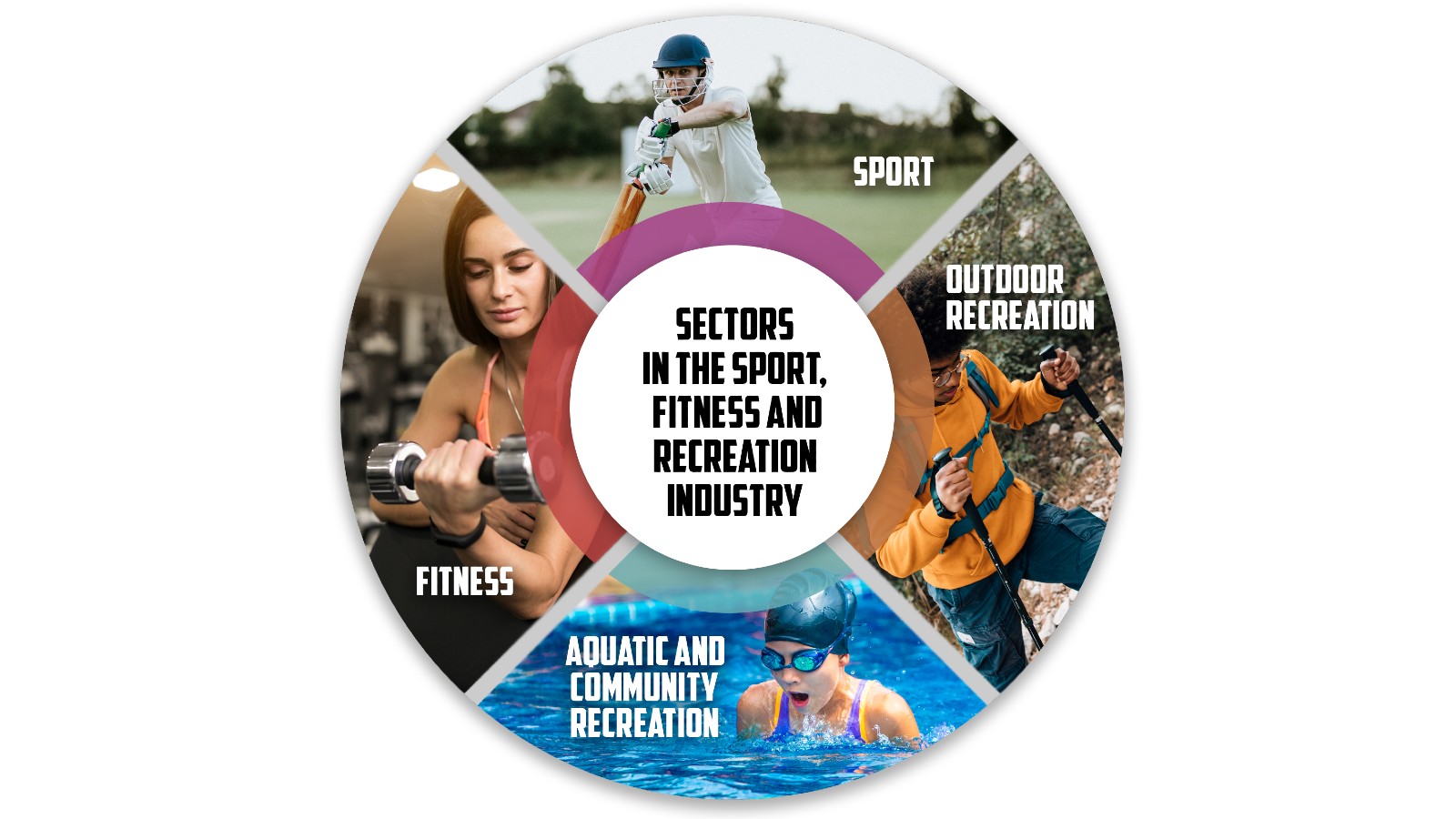Sports and fitness play an important role in many Australian's lives. Due to the temperate climate of the more populated areas of the country, outdoor activities are encouraged and easier to coordinate. Organised sports, including tennis, swimming, golf, basketball, cricket, and football, flourish throughout the country.
The Sport, Fitness, and Recreation Industry comprises four different sectors:
-
Aquatic and Community Recreation.
-
Fitness.
-
Outdoor Recreation.
-
Sport.

The industry is quite broad and encompasses all age groups, therefore employment opportunities and specific duties can be extremely varied. The Australian Industry and Skills Committee have developed various factsheets outlining each of these sectors, this information is used throughout this topic.
Every sector contributes on a greater or lesser scale to the local community’s economy and social structure. The benefits include:
-
Community spending - Spectators buy tickets to events, local businesses pay for advertising and sponsorship, local vendors are hired to provide catering and other services.
-
Personal financial stability - Participants may receive prize money, funding, sponsorship and other means to provide them with economic stability whilst participating.
-
Community, regional, and national social and economic improvements - Physical activity improves mental and physical health which inturn reduces incidences of disease and injury and lowers health care costs. Certain sectors are also providers of multiple employment opportunites.
There is some interrelationship between the various sectors, for example, participants may commence an activity in an informal or leisure capacity before developing their skill sufficiently to join a club or team and participate in more organised sports. Some other activities, for example swimming, can cross-over sectors as it is such as versatile activity and includes learning to swim, aqua aerobics, surfing, and also Olympic level competition.

